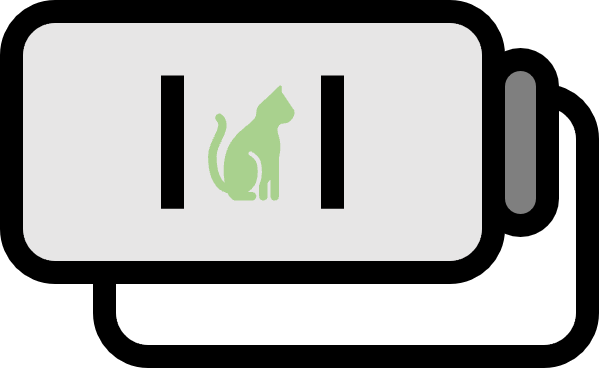量子力学におけるグラム・シュミットの直交化過程
定義
グラム・シュミットの直交化法Gram-Schmidt orthogonalization procedureは、互いに直交していないベクトルから直交集合を作る方法のことだ。
公式
時間無関係な二つの一次元波動関数 $u_{1}$、$u_{2}$を与えられたとしよう。このとき、$u_{1}$と $u_{2}$は正規化されていて、互いに直交していないとしよう。そうすると、次のような波動関数$u$は、$u_{1}$と直交する正規化された波動関数だ。
$$ \begin{align*} u &= \dfrac { \displaystyle \left(- \int u_{1}^{\ast} u_{2} dx \right)u_{1} + u_{2}}{\displaystyle \sqrt{ 1-\left| \int u_{1}^{\ast} u_{2} dx \right|^{2}}} \\ &= \dfrac { -\braket{u_{1} | u_{2}} u_{1} + u_{2}}{\sqrt{ 1-\left| \braket{u_{1} | u_{2}} \right|^{2}}} \\ \end{align*} $$
説明
$u_{1}$と$u_{2}$から$u_{1}$と直交する新しい固有関数$u$を見つけるのが目的だから、まず$u = c_{1} u_{1} + c_{2}u_{2}$としよう。さて、$u$が$u_{1}$と直交している条件と$u$の正規化条件を利用して$c_{1}$と$c_{2}$を求めることができる。
パート1. $u$と$u_{1}$は直交する。
$u$は$u_{1}$と直交しているから次が成り立つ。
$$ \begin{align*} \int uu_{1}^{\ast} dx &= \int \left( c_{1} u_{1}u_{1}^{\ast} + c_{2}u_{2}u_{1}^{\ast}\right) dx \\ &= \int c_{1}u_{1} u_{1}^{\ast}dx + \int c_{2}u_{2}u_{1}^{\ast} dx \\ &= c_{1} + c_{2}\int u_{1}^{\ast}u_{2} dx \\ &= 0 \end{align*} $$
したがって次を得る。
$$ c_{1}=-c_{2} \int u_{1}^{\ast}u_{2} dx \tag{1} $$
パート2. $u$は正規化された関数だ。
$u$は正規化された固有関数だから次が成り立つ。
$$ \begin{align*} \int uu^{\ast} dx &= \int (c_{1}u_{1}+c_{2}u_{2})(c_{1}u_{1}^{\ast}+c_{2}u_{2}^{\ast})dx \\ &= (c_{1})^{2} \int u_{1}u_{1}^{\ast} dx + (c_{2})^{2} \int u_{2}u_{2}^{\ast} dx + c_{1}c_{2} \left( \int u_{1}^{\ast}u_{2} dx + \int u_{1}u_{2}^{\ast}dx \right) \\ &= (c_{1})^{2} + (c_{2})^{2} + c_{1}c_{2} \left( \int u_{1}^{\ast}u_{2} dx + \int u_{1}u_{2}^{\ast}dx \right) \\ &=1 \end{align*} $$
最後の等式に$(1)$を代入すると以下のようだ。
$$ (c_{2})^{2} \left( \int u_{1}^{\ast} u_{2} dx \right)^{2} + (c_{2})^{2} -(c_{2})^{2} \left( \int u_{1}^{\ast} u_{2} dx\right)^{2} -(c_{2})^{2} \int u_{1}^{\ast} u_{2} dx \int u_{1}u_{2}^{\ast} dx =1 $$
$$ \implies (c_{2})^{2} -(c_{2})^{2} \int u_{1}^{\ast} u_{2} dx \int u_{1}u_{2}^{\ast} dx =1 $$
$$ \implies (c_{2})^{2} \left( 1- \left| \int u_{1}^{\ast}u_{2} dx \right |^{2} \right)=1 $$
$$ \implies c_{2}=\dfrac{1}{\displaystyle \sqrt{1- \left|\int u_{1}^{\ast}u_{2} dx \right|^{2}}} $$
ここで$c_{2}$の符号として$+$を選んだのは単に便宜のためであり、$-$を選んでも構わない。これを$(1)$に代入すると$c_{1}$を得る。
$$ c_{1} = \dfrac{\displaystyle -\int u_{1}^{\ast}u_{2} dx }{\displaystyle \sqrt{1- \left|\int u_{1}^{\ast}u_{2} dx \right|^{2}}} $$
したがって、$u_{1}$と直交しており、かつ正規化された関数$u$は次の通りだ。
$$ u = \dfrac {\displaystyle \left(- \int u_{1}^{\ast} u_{2} dx \right)u_{1} + u_{2}}{\displaystyle \sqrt{ 1-\left| \int u_{1}^{\ast} u_{2} dx \right|^{2}}} $$
■
